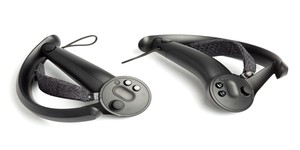Valve releases SteamVR Performance Test tool
February 23, 2016 | 13:55
Companies: #oculus-rift #steam #valve

Valve has launched its first performance test package for the SteamVR platform, offering gamers a chance to find out whether their rig would run an Oculus Rift or HTC Vive smoothly before splashing out a few hundred pounds on the hardware.
Based on the company's classic Portal franchise, the SteamVR Performance Test does exactly what it says on the tin: once installed and run, the two-minute benchmark will run through a level measuring the percentage of time the framerate dropped below the 90 frames per second mark required for smooth and immersive virtual reality while also checking to see how many frames are 'CPU bound' - in other words, how often the graphics card is being run below its potential because it's waiting for data from a bottlenecked CPU.
The result is a rating on a 'fidelity' scale, complete with graph of performance over the two-minute time period. A system report will then indicate whether a computer is Not Ready, VR Capable, or VR Ready accordingly.
While useful, the test does come with a few warnings. The first is that running a fake-VR test without actual VR hardware connected doesn't take into account the processor power needed to communicate with the hardware and process information from head-tracking and positional-tracking cameras and sensors. The other is that it doesn't take into account the number of USB ports required to connect said hardware.
Despite these restrictions, the SteamVR Performance Test is a handy tool for anyone thinking of investing in virtual reality hardware, and is live now on Steam.
Based on the company's classic Portal franchise, the SteamVR Performance Test does exactly what it says on the tin: once installed and run, the two-minute benchmark will run through a level measuring the percentage of time the framerate dropped below the 90 frames per second mark required for smooth and immersive virtual reality while also checking to see how many frames are 'CPU bound' - in other words, how often the graphics card is being run below its potential because it's waiting for data from a bottlenecked CPU.
The result is a rating on a 'fidelity' scale, complete with graph of performance over the two-minute time period. A system report will then indicate whether a computer is Not Ready, VR Capable, or VR Ready accordingly.
While useful, the test does come with a few warnings. The first is that running a fake-VR test without actual VR hardware connected doesn't take into account the processor power needed to communicate with the hardware and process information from head-tracking and positional-tracking cameras and sensors. The other is that it doesn't take into account the number of USB ports required to connect said hardware.
Despite these restrictions, the SteamVR Performance Test is a handy tool for anyone thinking of investing in virtual reality hardware, and is live now on Steam.

MSI MPG Velox 100R Chassis Review
October 14 2021 | 15:04









Want to comment? Please log in.